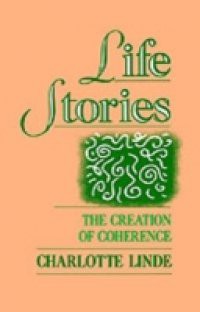All adult speakers in Western cultures have life stories argues Charlotte Linde, and the ways in which these life stories are formed and exchanged with others have a powerful effect on all of us. Life stories express our sense of self, who we are and how we got that way. According to Linde, we also use these stories to show that our lives can be understood as coherent, and to assert or negotiate group membership. These life stories take part in the highest level of social constructions, since they are built on cultural assumptions about what is expected in a life, what the norms for a successful life are, and what common or special belief systems are necessary to establish coherence. The life story, illuminated by this engrossing study, is a form of everyday discourse which has not previously been precisely defined or studied. It is an oral, discontinuous unit, consisting of stories which are retold in a variety of forms over a long period of time, and which may be revised and changed as the speaker comes to drop old meanings and add new ones to parts of the life story. The life story is a particularly rich and important area for study, because it represents a crossroads of linguistic structure and social practice. Lindes analysis is of importance to linguistics, as well as having broader implications for anthropology, psychology, and sociology.

